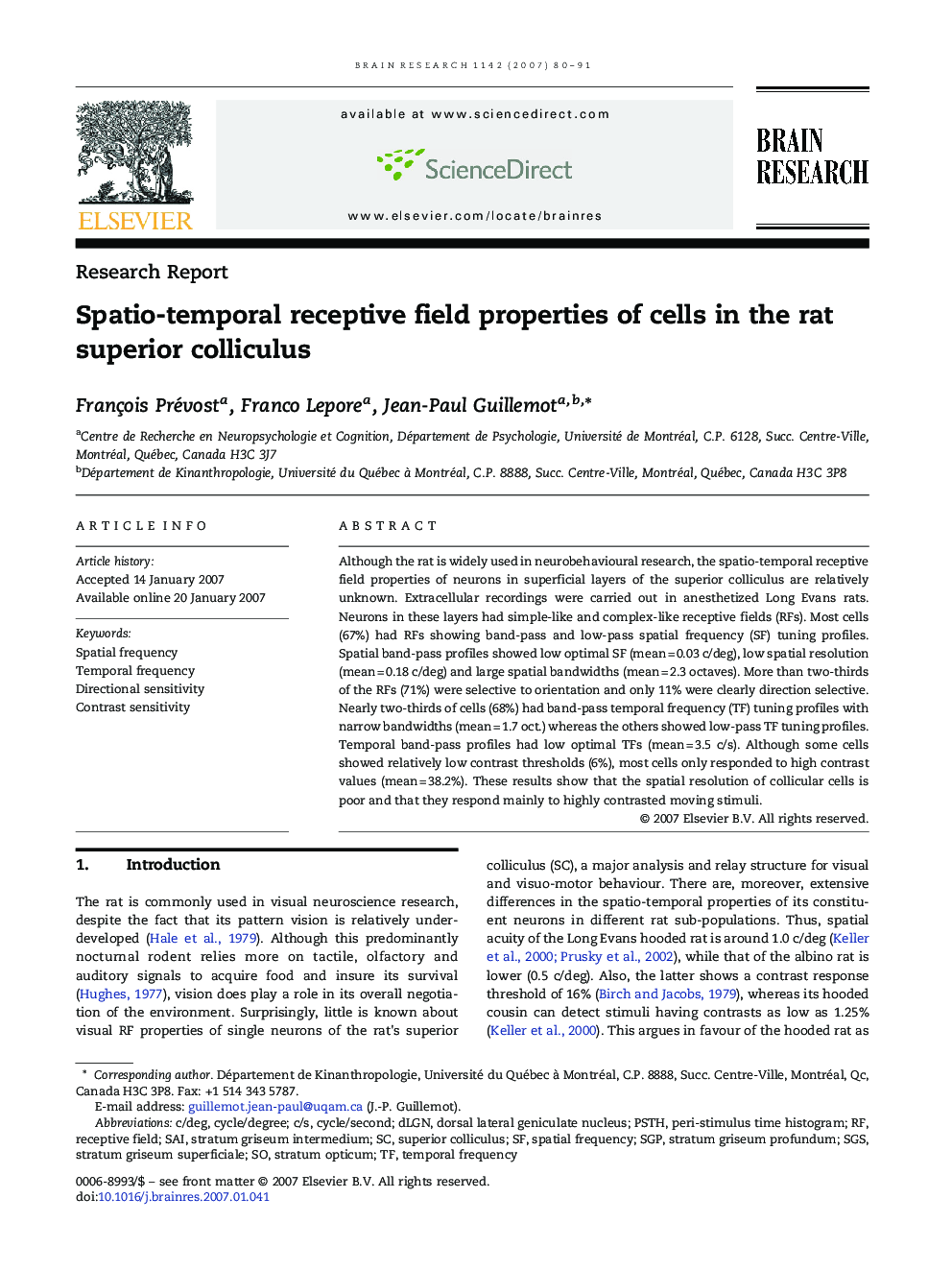| Article ID | Journal | Published Year | Pages | File Type |
|---|---|---|---|---|
| 4331266 | Brain Research | 2007 | 12 Pages |
Abstract
Although the rat is widely used in neurobehavioural research, the spatio-temporal receptive field properties of neurons in superficial layers of the superior colliculus are relatively unknown. Extracellular recordings were carried out in anesthetized Long Evans rats. Neurons in these layers had simple-like and complex-like receptive fields (RFs). Most cells (67%) had RFs showing band-pass and low-pass spatial frequency (SF) tuning profiles. Spatial band-pass profiles showed low optimal SF (mean = 0.03 c/deg), low spatial resolution (mean = 0.18 c/deg) and large spatial bandwidths (mean = 2.3 octaves). More than two-thirds of the RFs (71%) were selective to orientation and only 11% were clearly direction selective. Nearly two-thirds of cells (68%) had band-pass temporal frequency (TF) tuning profiles with narrow bandwidths (mean = 1.7 oct.) whereas the others showed low-pass TF tuning profiles. Temporal band-pass profiles had low optimal TFs (mean = 3.5 c/s). Although some cells showed relatively low contrast thresholds (6%), most cells only responded to high contrast values (mean = 38.2%). These results show that the spatial resolution of collicular cells is poor and that they respond mainly to highly contrasted moving stimuli.
Keywords
Related Topics
Life Sciences
Neuroscience
Neuroscience (General)
Authors
François Prévost, Franco Lepore, Jean-Paul Guillemot,
